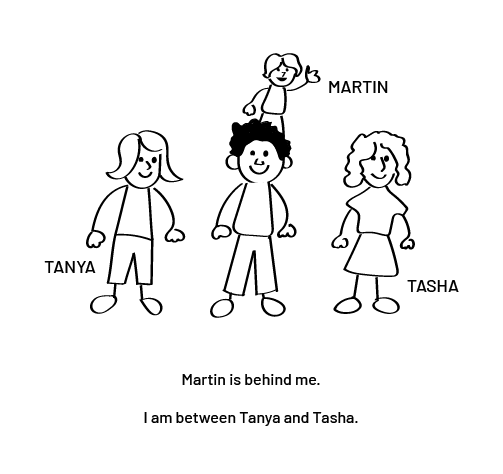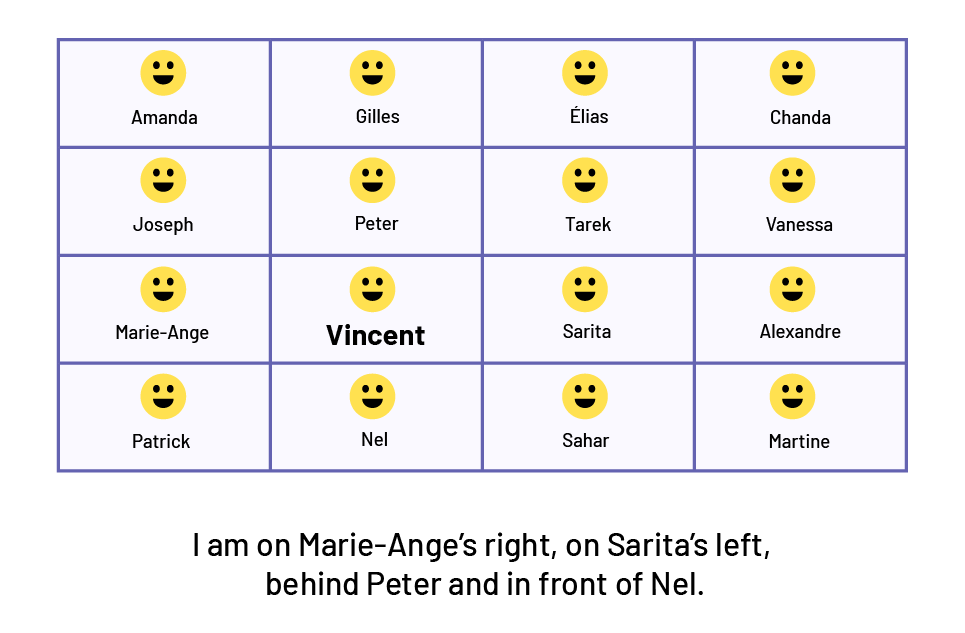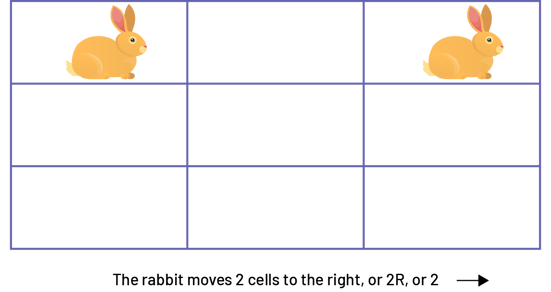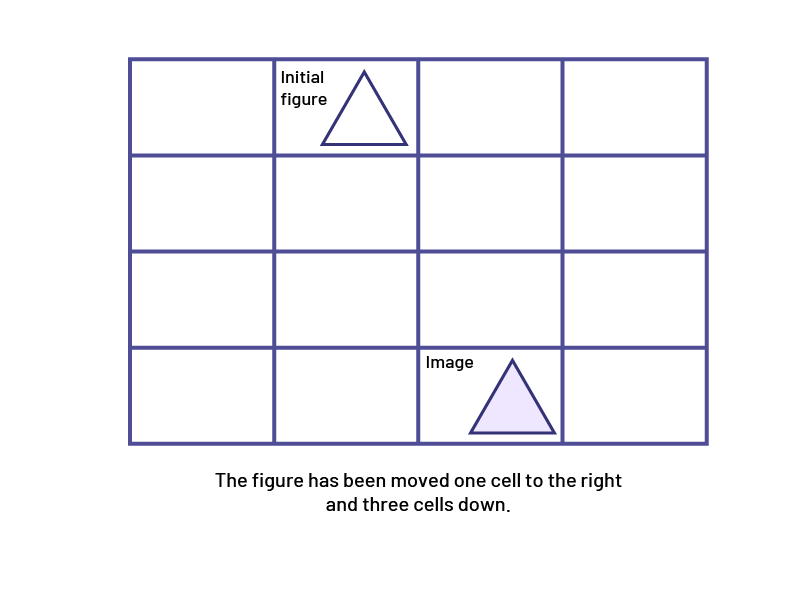E1.5 Describe the relative positions of several objects and the movements needed to get from one object to another.
Skill: Describing Relative Location
In the Primary Division, children constantly observe their environment and establish reference points in order to situate themselves in the space around them. Children first situate people or objects in relation to themselves and then situate themselves in relation to other people or objects.
Example

To describe the location of an object, the student looks around the object to find benchmarks.
Example

To locate an object, the child first selects or identifies an object as a benchmark. Then, they combine several benchmarks to identify or locate objects according to a tracking system. For example, the child can recognize that the red lines in the gym are the boundaries for the students of their class. In Grade 1, they can locate a student in the classroom in relation to other students.
Example
 image A grid of 4 columns and 4 rows. In each box there is a smiley face and a first name. From the top going from left to right: Amanda, Gilles, Elias, Chanda, Joseph, Peter, Tarek, Vanessa, Marie-Ange, Vincent, Sarita, Alexandre, Patrick. Nel, Sahar, Martine. A label below the grid: "I am to the right of Marie-Ange, to the left of Sarita, in front of Peter and behind Nel."
image A grid of 4 columns and 4 rows. In each box there is a smiley face and a first name. From the top going from left to right: Amanda, Gilles, Elias, Chanda, Joseph, Peter, Tarek, Vanessa, Marie-Ange, Vincent, Sarita, Alexandre, Patrick. Nel, Sahar, Martine. A label below the grid: "I am to the right of Marie-Ange, to the left of Sarita, in front of Peter and behind Nel."
Source: translated from Guide d’enseignement efficace des mathématiques de la 1re à la 3e année, Géométrie et sens de l'espace, p. 56-58.
Skill: Describing a Movement
Children arrive at school with prior experience in moving through their environment. Over the years, their vocabulary evolves and allows them to describe the movements with greater precision.
Translation
Prior to Grade 4, students perform translations without knowing that they are translations. For example, he or she puts things away, changes the position of various objects, and moves from one place to another. Teachers give directions so that the student can move to get an object, go to the washroom, or to the secretary's office.
In Grade 1, students describe movements in a grid using four directions: right, left, up, and down. Students can describe a movement, both in terms of distance and direction using words or symbols.
Example

In Grade 2, students learn to express movement more precisely. They make horizontal and vertical movements on a grid. They use a tracking system to describe direction (right, left, up, down) and distance (number of squares).
Example

Source: translated from Guide d’enseignement efficace des mathématiques de la maternelle à la 3e année, Géométrie et sens de l'espace, p. 59-61
